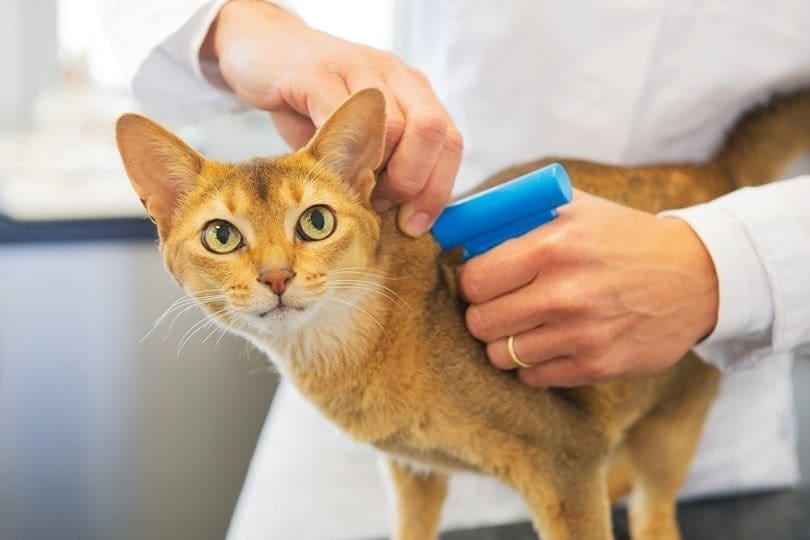You’re an animal lover who wants to help animals in need, but you don’t know where to start. The odds are good that animals and pet shelters in your own neighborhood or city need help. These seven ideas are a great starting point to lend a helping hand.

The 7 Great Ideas to Help Animals and Pet Shelters
1. Donate Pet Items to Your Local Food Pantry
Many food pantry customers have dogs and cats at home. Tight finances affect people and their pets. Ask your local food pantry if they need cat litter, dog and cat food, or other pet supplies.
You can stretch your dollar further by stocking up on pet food when it goes on sale or by using coupons. If you work for a grocery store or retailer, ask your manager what happens to damaged pet food bags, boxes, and cans. The store may toss these items due to limited space, but the food may still be good.

2. Set Up a Little Free Pet Pantry
Little Free Pantries are small cabinets that individuals and businesses place in their yards. The idea behind these outdoor cabinets is, “take what you need. Leave what you can.” The pantries are accessible to anyone who wants to leave a donation or needs to take items, no questions asked. People fill Little Free Pantries with shelf-stable food, grooming supplies, and household products.
Little Free Pet Pantries are also starting to pop up across the country. These pet-specific pantries contain small Ziploc bags of dry food, canned food, litter, brushes, collars, and other necessities. You can buy a weather-proof pantry online or build your own. Scouting organizations, churches, youth clubs, businesses, and neighbors can work to keep your Pet Pantry stocked.
3. Volunteer at a Pet Shelter
Pet shelters can almost always use an extra hand. They often need volunteers to walk dogs, cuddle with cats, and spend one-on-one time with animals. Shelters also have other needs. Are you a computer whiz? Willing to do yard work? It never hurts to let the shelter staff know where your strengths and experience lie.
Volunteering requires a significant commitment, so it may not be for everyone. The shelter relies on you to be there during your scheduled hours, and you may need to attend a training session and sign a waiver before volunteering. Some shelters have age requirements, and young children may be unable to volunteer.

4. Be a Long Distance Driver for Animal Welfare Organizations
Many shelters and rescue groups partner with other organizations across the country. For example, a shelter in one state agrees to take dogs from an overcrowded shelter in another state. However, they need a driver to make it work.
This volunteer effort can take the better part of a day or even several days. Each driving gig is different, and you’ll need to find the right fit for you. Some organizations will have a van you can drive, while others will ask that you use your own vehicle. You could be on your own or part of a team of drivers. The shelter typically provides gas money and all pet supplies, but you may have to pay for meals.
Volunteering as a pet driver may be right for you if you have a flexible schedule and know how to handle nervous and scared animals.
5. Help a Senior Keep Their Pet
Research shows that there are positive health benefits to having a pet. Being around a companion animal can reduce stress-related hormones in your body, lower your blood pressure, and boost your mood. Animals also keep us active.
Caring for an animal can become a challenge as a person ages. Activities like carrying heavy bags of litter, going for long walks, or grooming may be impossible. Sadly, some seniors have to rehome their beloved pets because they can no longer care for them.
You can help seniors, and their pets stay together by volunteering your time. Do you know an older person who could use a hand cleaning out their cat’s litterbox? Maybe you can take their dog for a long walk or provide a ride to the veterinarian.
Contact your county’s Department of Aging/Office of Aging, church, or neighborhood group if you don’t know someone personally.

6. Help Run a Spay/Neuter Event
Some veterinary offices and animal hospitals run low-cost spay/neuter events a few times a year. These high-volume events require a lot of effort to be successful. If your city has a spay/neuter event coming up, contact the organizers to find out how you can help.
They may need your help to contact pet owners on the waitlist, send out reminder letters, and post flyers. On the day of the event, you could assist with checking in pets, calling owners to let them know they can pick up their pets, and helping with parking.
7. Donate to Microchipping Efforts
Many pet owners decide not to microchip their pets. This choice may be out of financial need or a lack of awareness about how important microchipping is. A microchip dramatically increases the chances that a lost or stolen pet will be reunited with its owner. Sadly, only 15% of dogs and 2% of cats that arrive at a shelter without a microchip or ID tag are reunited with their owner.
A collar with an ID tag is helpful, but it’s not enough. Collars can fall off or be taken off. A microchip is a fast, easy, and permanent way to identify a pet.
Ask your veterinarian if you can sponsor a microchip for a needy pet. They can anonymously choose someone who would otherwise not be able to afford one. If there is a low-cost microchip event in your area, ask if they accept donations. Often, the small fee they charge owners doesn’t fully cover the cost of the event.


Final Thoughts
There are many ways to help animals in need, regardless of how much time or money you have to give. Install a Little Free Pet Pantry if you have the space at home or work, or buy pet supplies for your local food pantry. Adults who love hands-on time with animals can volunteer at a shelter. You can take a road trip and help pets by being an animal transporter or assist an older adult by caring for their pet. Any effort, big or small, will make a difference.
See Also:
- How To Celebrate DOGust 1st (The Universal Birthday For Shelter Dogs)
- 14 Animal Shelter Statistics & Facts
Featured Image Credit: hedgehog94, Shutterstock
